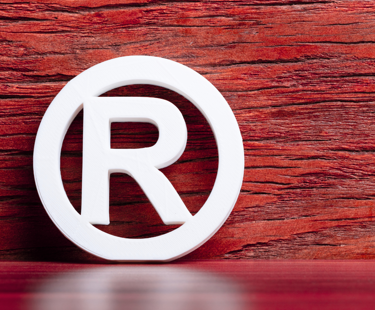A trade mark portfolio is much like a garden – the work doesn’t stop once the seeds have been planted. Ongoing maintenance is essential for ensuring that things are kept in good order and to prevent your brand(s) from losing their exclusive allure.
As such, Part 2 of our ‘Top Tips’ guide recommends the steps that brand owners should take to effectively police and manage their trade mark portfolios.
Keep good ‘use’ records
After a period of 5 years, Trade Mark Registrations become vulnerable to ‘non-use’ cancellation i.e., a third party could apply to remove the registration if it has not been put to ‘use’. Furthermore, where such a registration is relied upon in trade mark opposition or infringement proceedings, the other party can request ‘proof of use’.
Consequently, it is recommended that brand owners keep record of all of their ‘use’ of their brand, including (but not limited to) the following:
- Turnover figures for goods/services sold under a particular brand.
- Invoices for goods/services sold under a particular brand.
- Marketing/advertising expenditure figures with respect to the particular brand.
- Any marketing materials bearing the brand (leaflets, brochures, press releases etc).
- Any third-party materials referring to the brand (reviews, awards, trade journals etc).
Keeping these records ensures that you are in a position to react and respond with ‘use’ evidence as and when it is necessary to maintain and enforce your registrations.
Regularly review and audit
Brands and commercial offerings can evolve over time. Whilst steps can be taken to anticipate such evolution and ‘future proof’ at the outset, gaps can appear over time as your business grows, potentially leaving you exposed.
It is pertinent to periodically review your trade mark portfolio and consider whether it matches your commercial offering. Brand owners should periodically consider:
- Whether their trade mark protection matches what brands they are using in commerce. Has the house branding evolved/altered and/or are there new sub-brands being used?
- Whether their trade mark protection matches what goods/services are being offered in commerce. Has the nature of the commercial offering evolved and/or expanded since protection was sought?
- Has the commercial offering expanded into new territories and does protection need to be sought in these territories?
If the answer to any of these questions is ‘yes’, there will be vulnerabilities within your portfolio that should be addressed.
Renewals
In the UK, trade mark registrations are due for renewal every 10 years. Should you instruct an IP firm to manage your portfolio, they will log all renewals and send reminders as appropriate (although it is good practice to keep your own records).
Should you take responsibility for the management of your portfolio, it is imperative that you have a reminder system in place, so as to avoid registrations inadvertently lapsing and losing protection as a consequence.
Use enforcement and monitoring tools to your advantage
Ineffective enforcement of your brand can lead to the diminishing of its’ ‘pulling’ power. Indeed, there are many examples of brands not being enforced effectively, potentially resulting in the brand losing its’ exclusive attractive force (also known as ‘genericide’, discussed in a previous article).
Brand owners should be proactive in taking steps to stamp out unauthorised use of their brand, including:
- Watching services: Trade mark ‘watching’ services enable the brand owner to actively monitor new trade mark applications, notifying them of any potentially problematic new filings.
- Online marketplace/social media takedowns: Online marketplaces (such as Amazon) and social media platforms often have tools for reporting and taking down infringing items. Engaging with these tools, as and when necessary, can be a cost-effective way of stamping out infringement.
- Cease and desist: Cease and desist letters are used to warm third parties regarding their use of a brand that infringes upon your rights. Where you think there may have been infringement, seek advice from an IP firm about next steps and whether there are grounds for sending a cease and desist letter.
Correct use of the ® symbol
The ‘R’ symbol is used to denote that a trade mark has been registered. It is imperative that this symbol is only used to denote registered trade marks, given that improper use of this symbol is a criminal offence.
When used properly, the ‘R’ symbol is your ‘flag in the sand’, putting others on notice that you own rights in a particular brand. It is good practice to include a notice providing details of the registration (for example, at the bottom of your website). This could look as follows:
“UK Trade Mark Registration Number [INSERT NUMBER] [INSERT TRADE MARK] in Classes [LIST CLASSES] in the name of [INSERT OWNER NAME]”
In the absence of registered trade mark protection, consider using the ‘TM’ symbol. The ‘TM’ symbol can be used irrespective of whether you have registered trade mark protection or not, and can be used to show that you are claiming to have unregistered trade mark rights. Whilst it is no guarantee as to whether or not you do in fact own such rights, it can be a useful tool to warn off competitors.
Seek advice from a Chartered Trade Mark Attorney
A Chartered Trade Mark Attorney is best placed to advise on any trade mark related queries that you have and can create protection strategies that are bespoke to your commercial aims and budget. If you would like to speak with a Chartered Trade Mark Attorney, please do not hesitate to get in touch.


